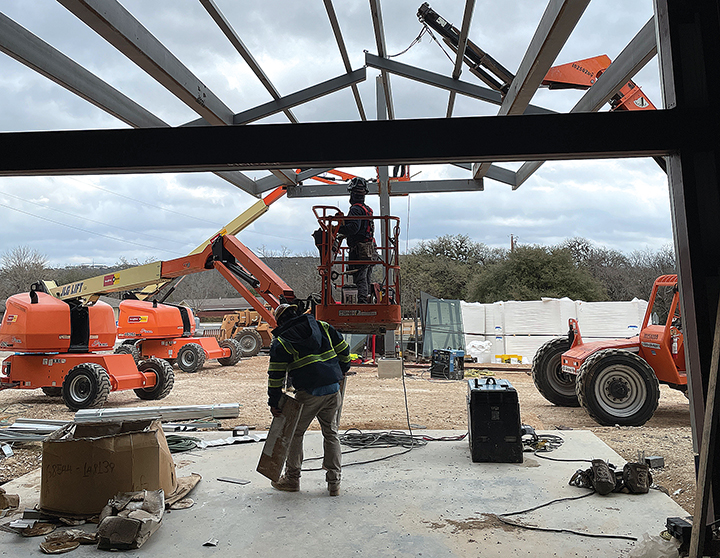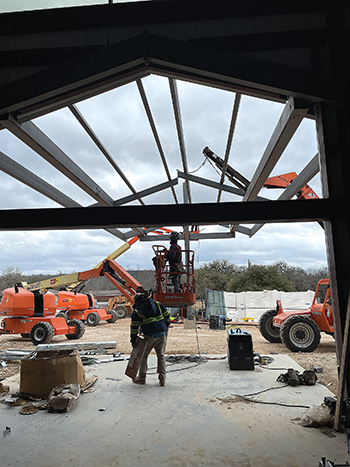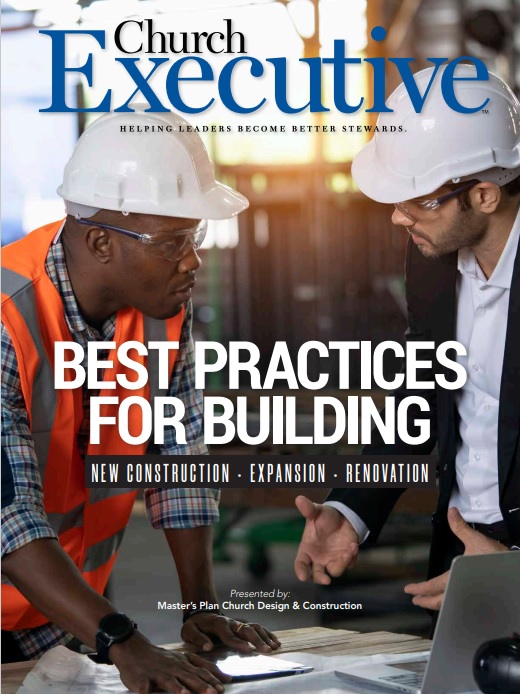
How to determine your best path forward
By Rodney C. James
It doesn’t matter if yours is a more recent church plant looking for its first potential forever home or a well-established church where facilities are hindering you from fulfilling your God-given vision: answering the question, “What do we do next?” has implications that can either thrust your ministry to the next level or have devastating consequences.
Understanding your options and knowing the right questions to ask along the way will help ensure you are gathering the information needed to make wise decisions.
The first variable in the equation that must be determined is vision. A clarified vision and mission purpose will provide the framework within which your team can make decisions about ministry facilities. The “why” of renovating, building or buying a facility always comes first to ensure that the result will indeed facilitate your ministry and help you fulfill the mission God has given.
The second variable that must be given a value is budget. A good financial analysis should be completed to help you determine the budgetary parameters of your project. Engage a partner who can help you evaluate your potential stewardship campaign expectations given current conditions, as well as your borrowing limits, your ongoing debt service capacity, and other factors. Establishing a budgetary range is a critical second step to ensure that the decisions made next can be funded.
 Examining the options
Examining the options
Once you have determined vision and budget, the next step is to begin to evaluate the options before you to help fulfill the vision within the budgetary constraints.
For churches with facilities that are not facilitating their ministry, the question we often hear as ministry facility designers is, “Do we renovate what we have, or do we look to relocate?” This is a great question that can usually help determine a path forward with a few follow-up considerations.
First, are the structure and systems of your current facilities in good condition? If the structure and systems are not draining the budget for upkeep and maintenance, then we pass the first test of staying and renovating. But more information is needed to make the final decision.
Second, we would consider the available square footage and current use of your existing spaces. If your spaces are not being fully maximized, perhaps some reconfiguration could help you gain additional ministry area. If you have sufficient square footage, perhaps some reconfiguration would greatly increase the ministry efficiency and save the costs of expansion or relocation.
After the above considerations are made and you determine your current facilities cannot facilitate your mission or are too costly to maintain, perhaps the next question is, “Do we buy a building?” Would that be another church building or a building of a totally different use that can be repurposed for ministry?

While the purchase of an existing building can provide potential savings, there are many considerations beyond location and square footage. As you evaluate available structures, it is helpful to have a partner who knows your vision, understands your budget, and knows current construction costs. This can provide you with very accurate information as you evaluate different buildings.
 A thorough walk-through of the building can quickly reveal the possibilities and the potential hurdles for converting this into a tool that can facilitate your mission. Items to be considered when considering a specific building are:
A thorough walk-through of the building can quickly reveal the possibilities and the potential hurdles for converting this into a tool that can facilitate your mission. Items to be considered when considering a specific building are:
• Infrastructure — do current utilities and systems support the new use?
• Parking — is it adequate for expected size of this campus?
• Ceiling heights — can you design a worship space that will create the right atmosphere?
• Structure type — will modifications to convert for ministry be within budget or too costly?
Knowing the answers (and more importantly, actual expected costs to repurpose for your specific ministry use) can help you determine if the purchase of a building can really help you save costs and meet your needs.
The final consideration is constructing a new facility. While this option is the easiest to configure to meet missional alignment, it will likely require more financial commitment than the other options.
When your current space simply cannot help you fulfill the vision God has given, and a building cannot be purchased and adequately repurposed, then building a new facility could be a great option.
It is very important that an excellent due diligence process be followed for any land purchase and prior to any building design. This process will help you accurately determine all expected costs outside the new structure before you journey too far.
Having the right information, at the right time, is critical to a successful journey which results in a new facility that empowers your church to fulfill its mission at or under budget.
Rodney C. James, a former pastor, is president and founder of Master’s Plan Church Design & Construction in Tulsa, Okla.


